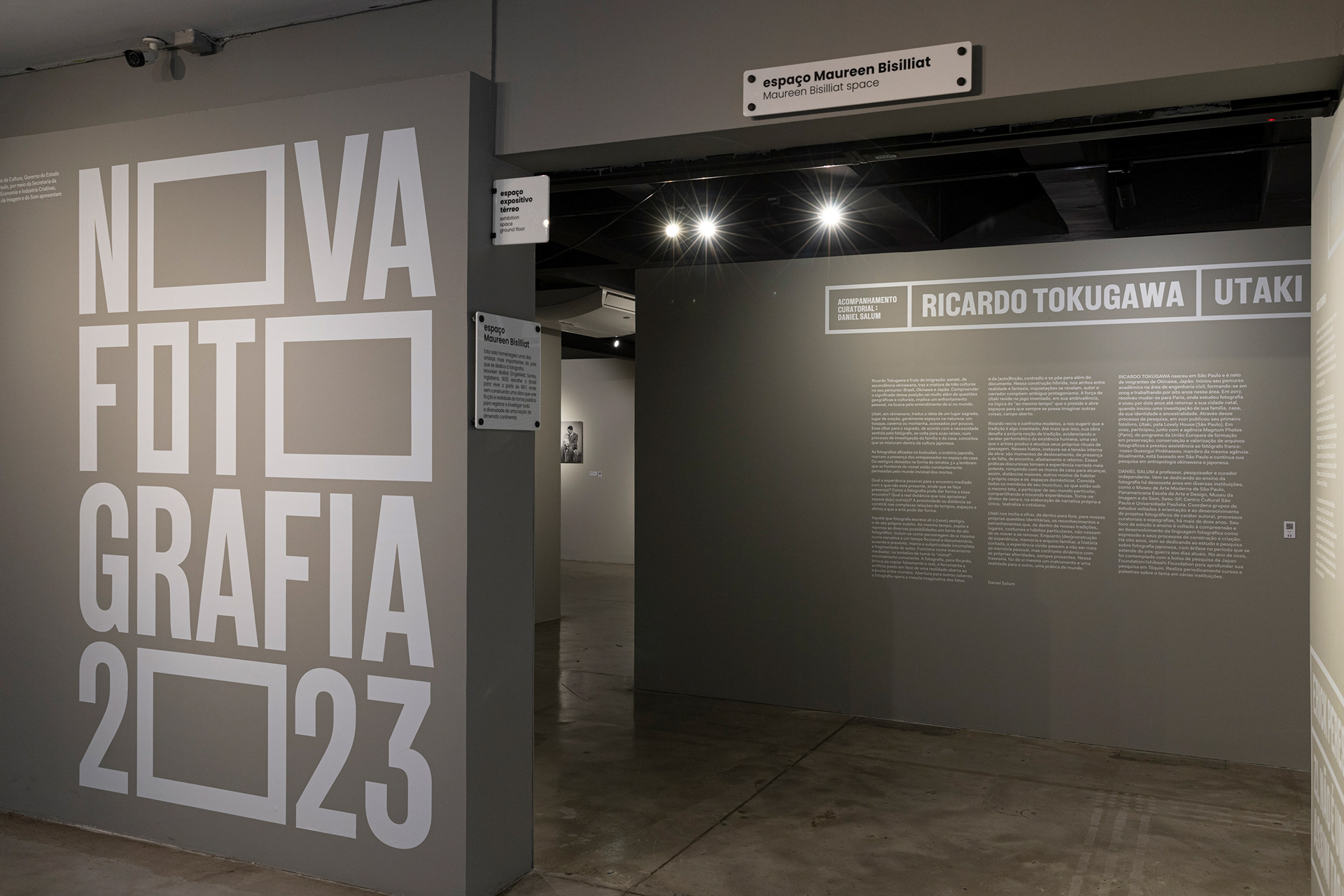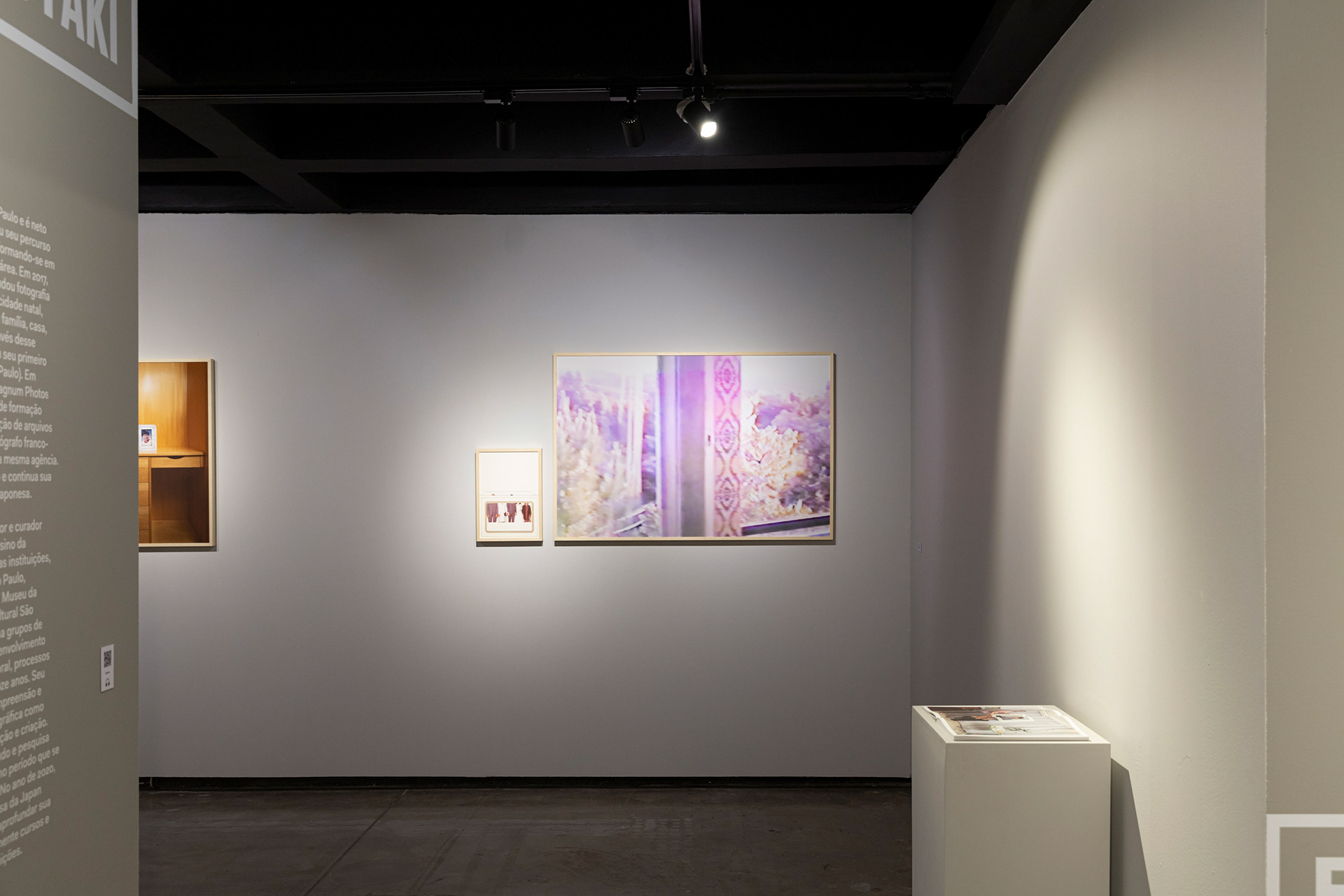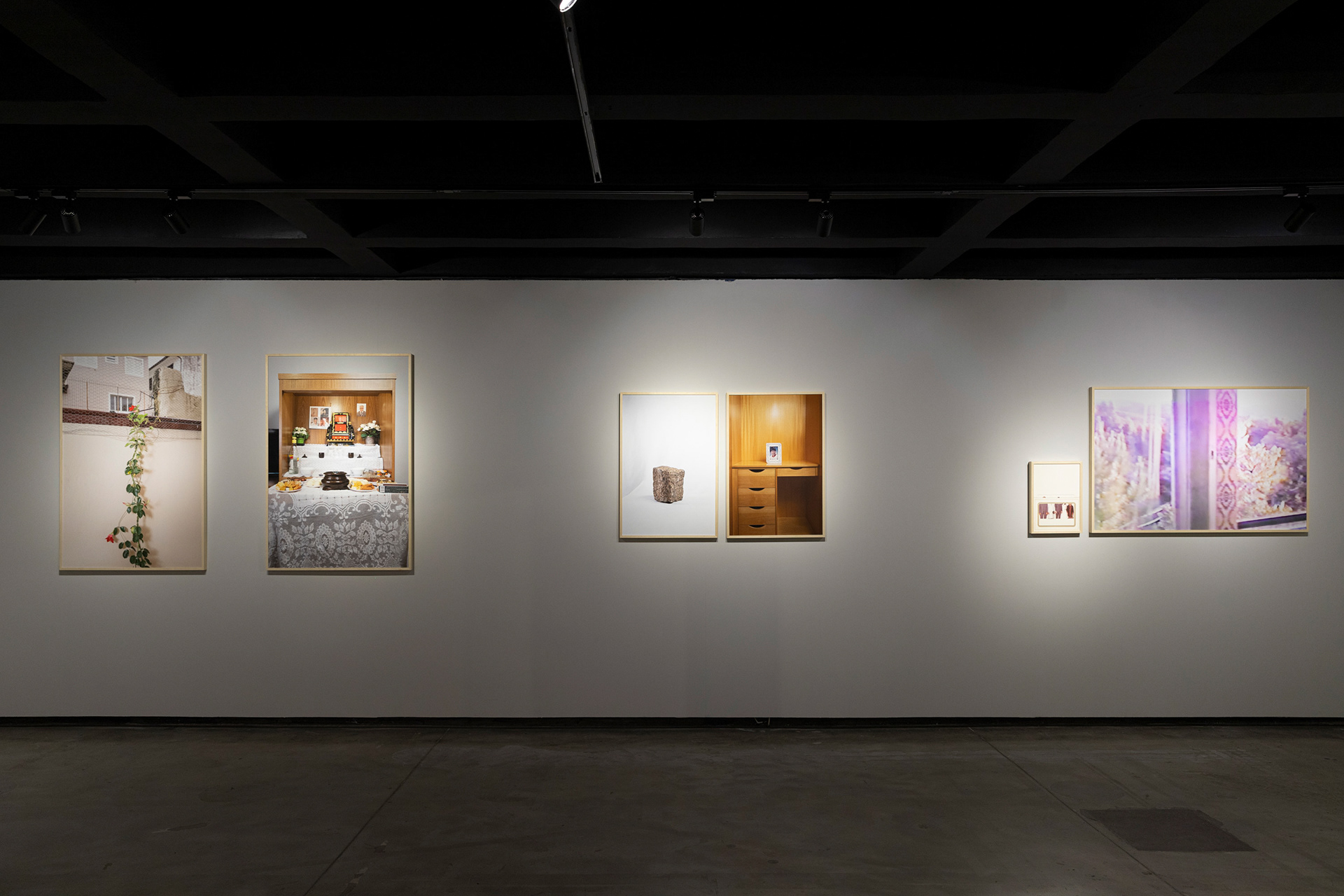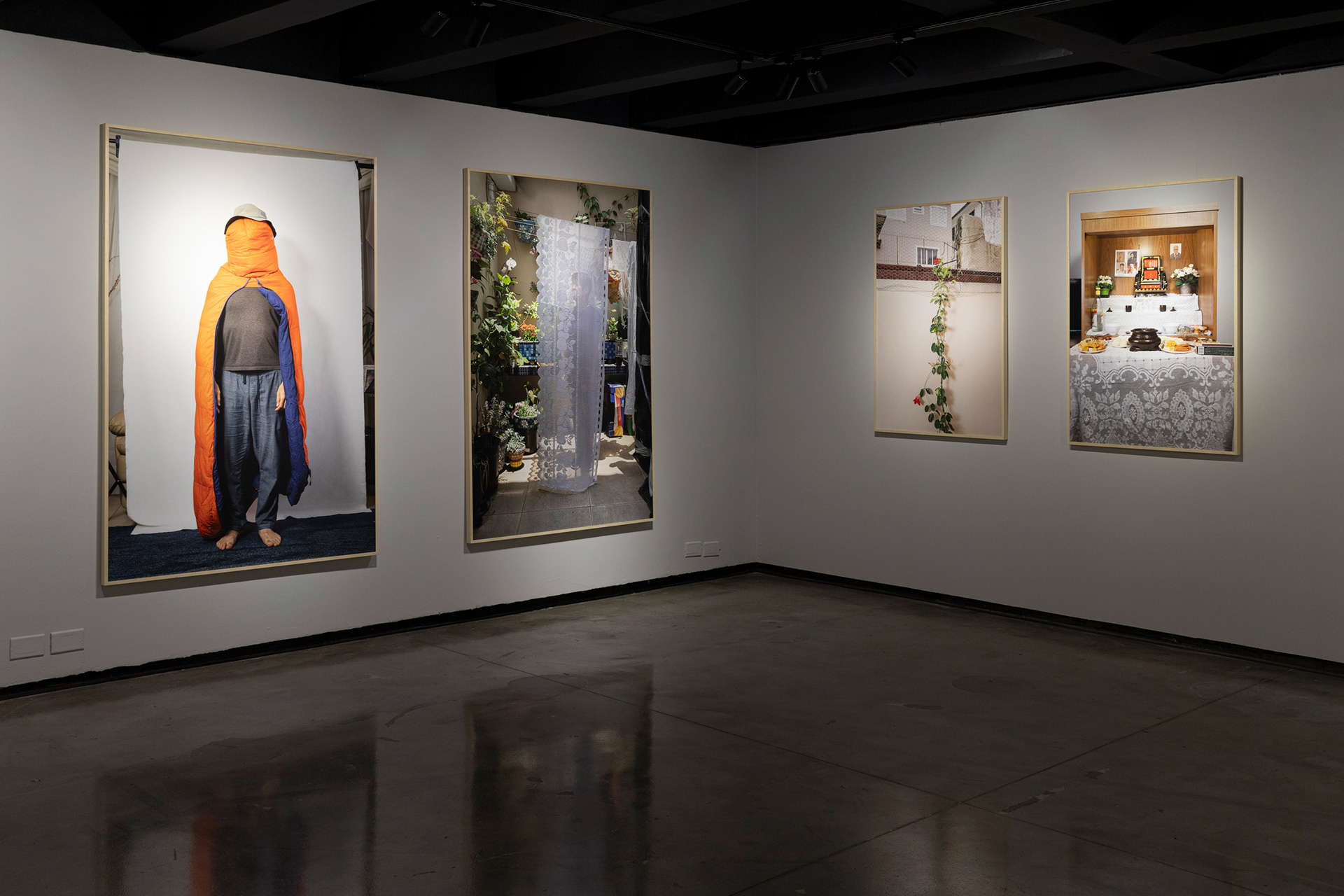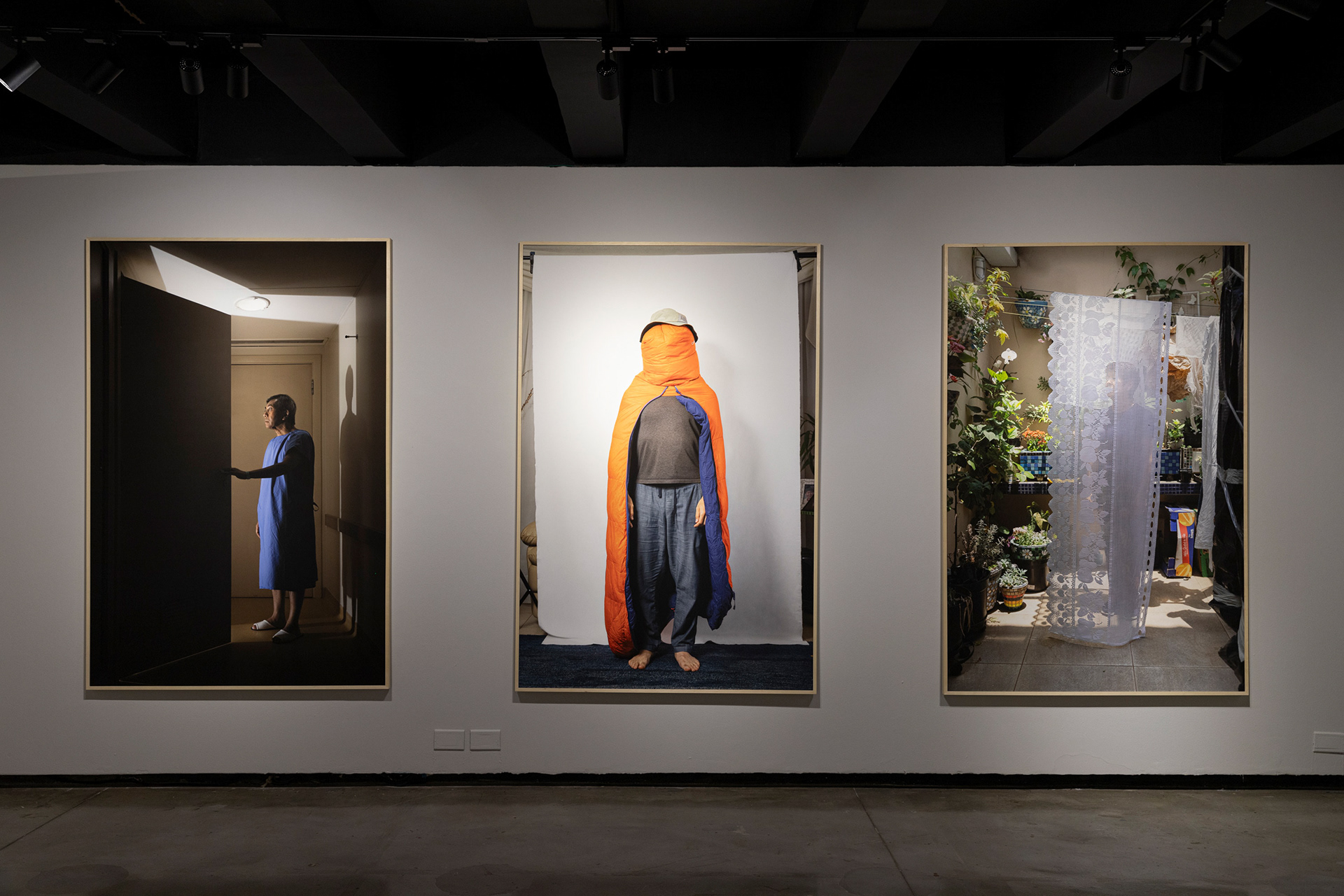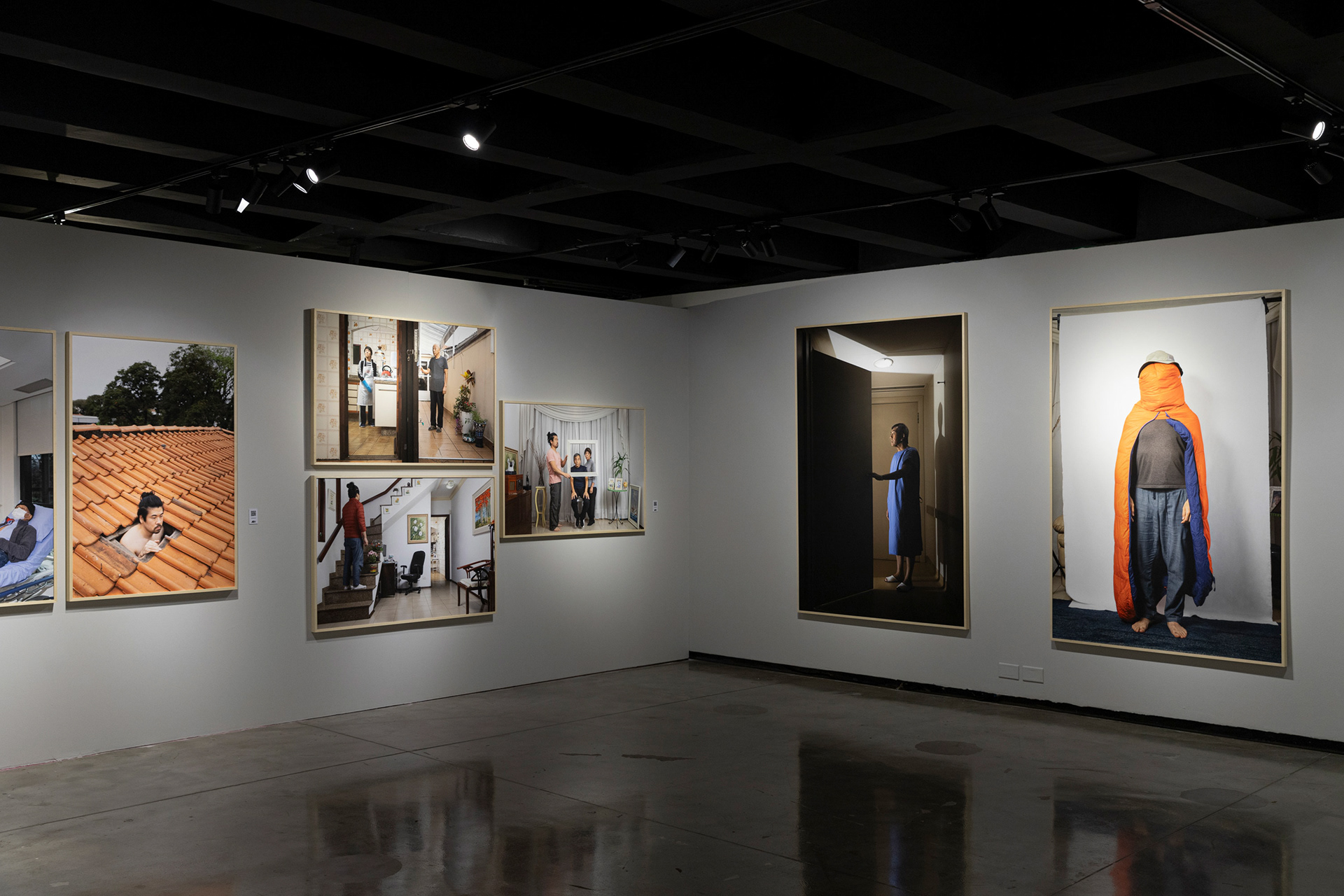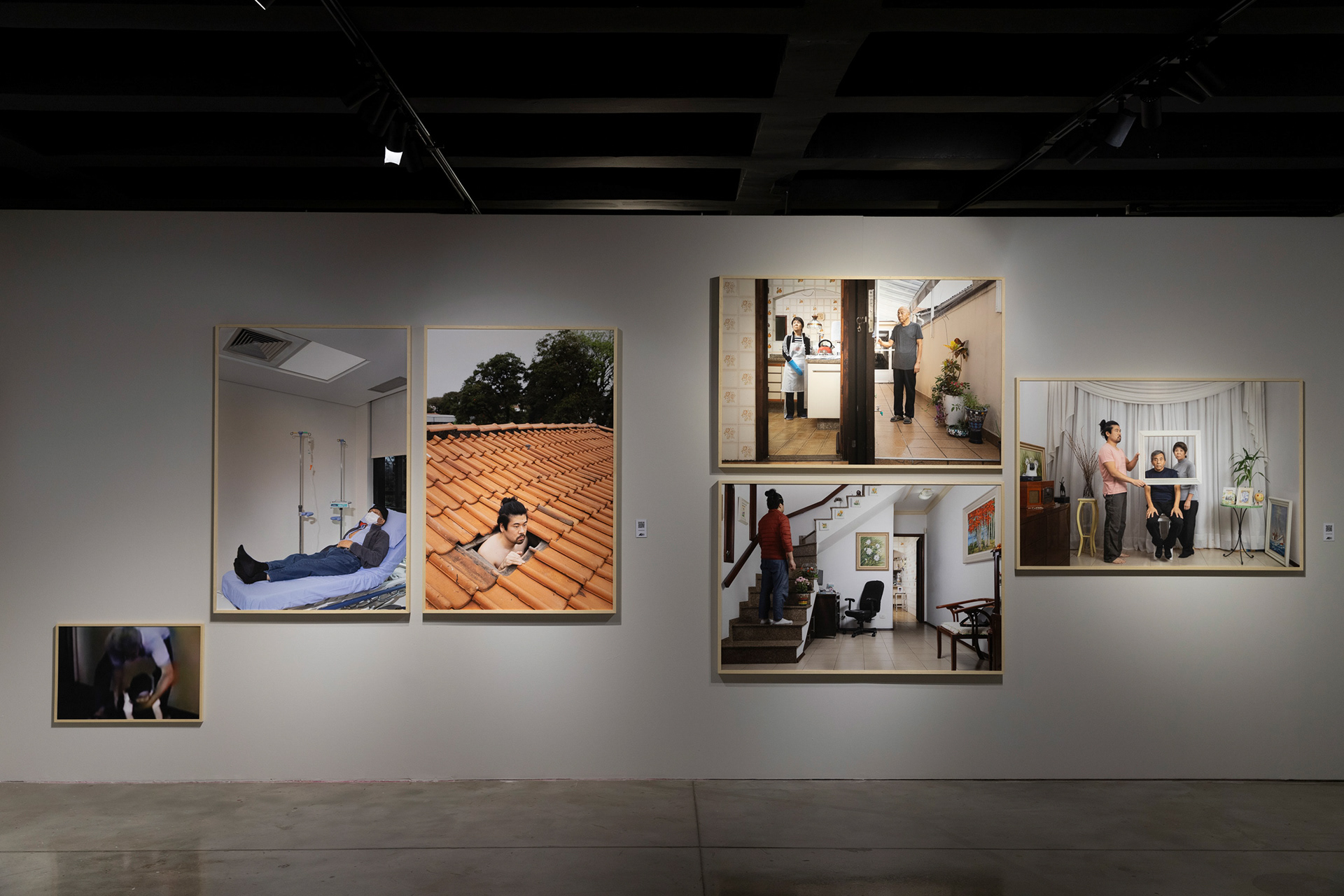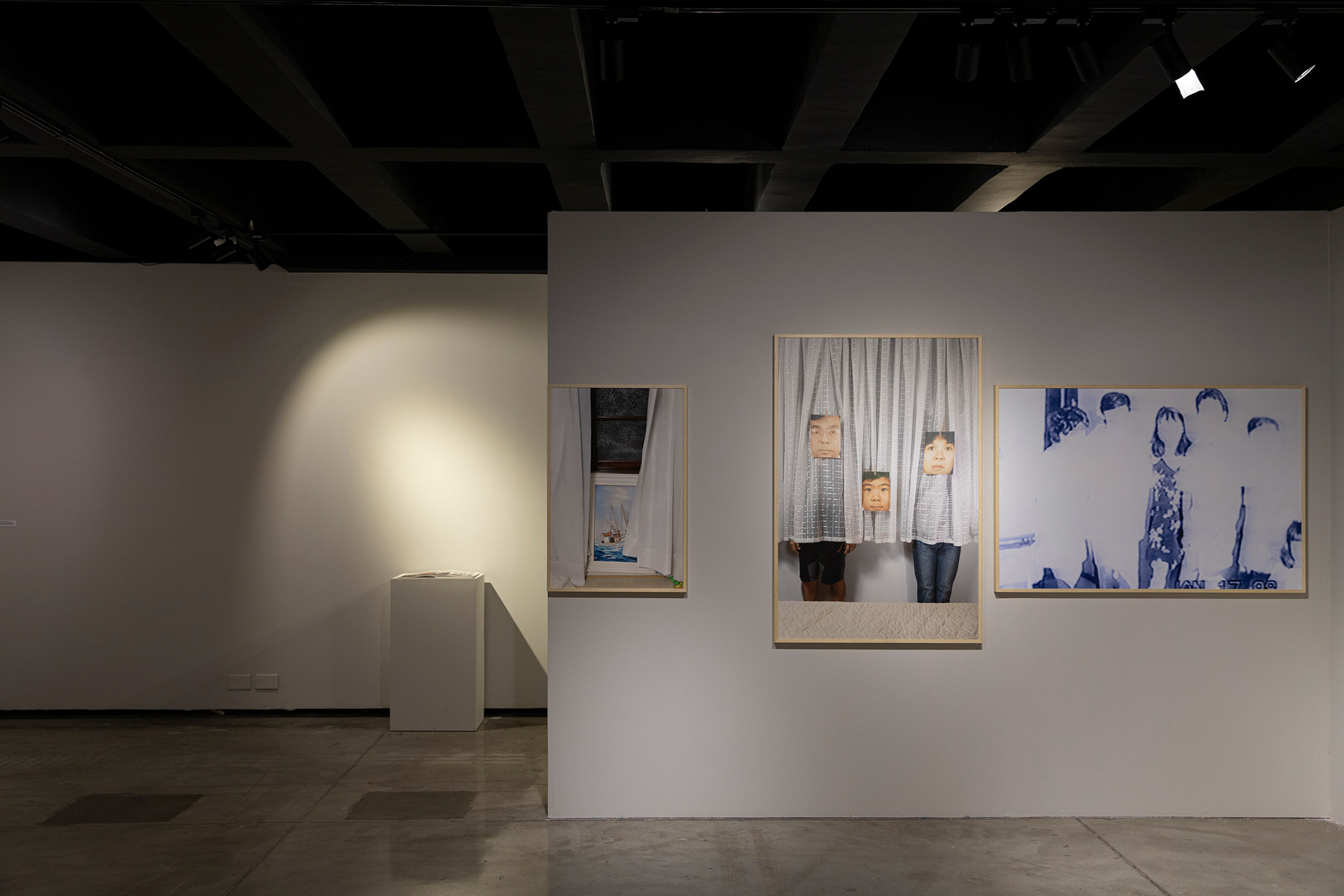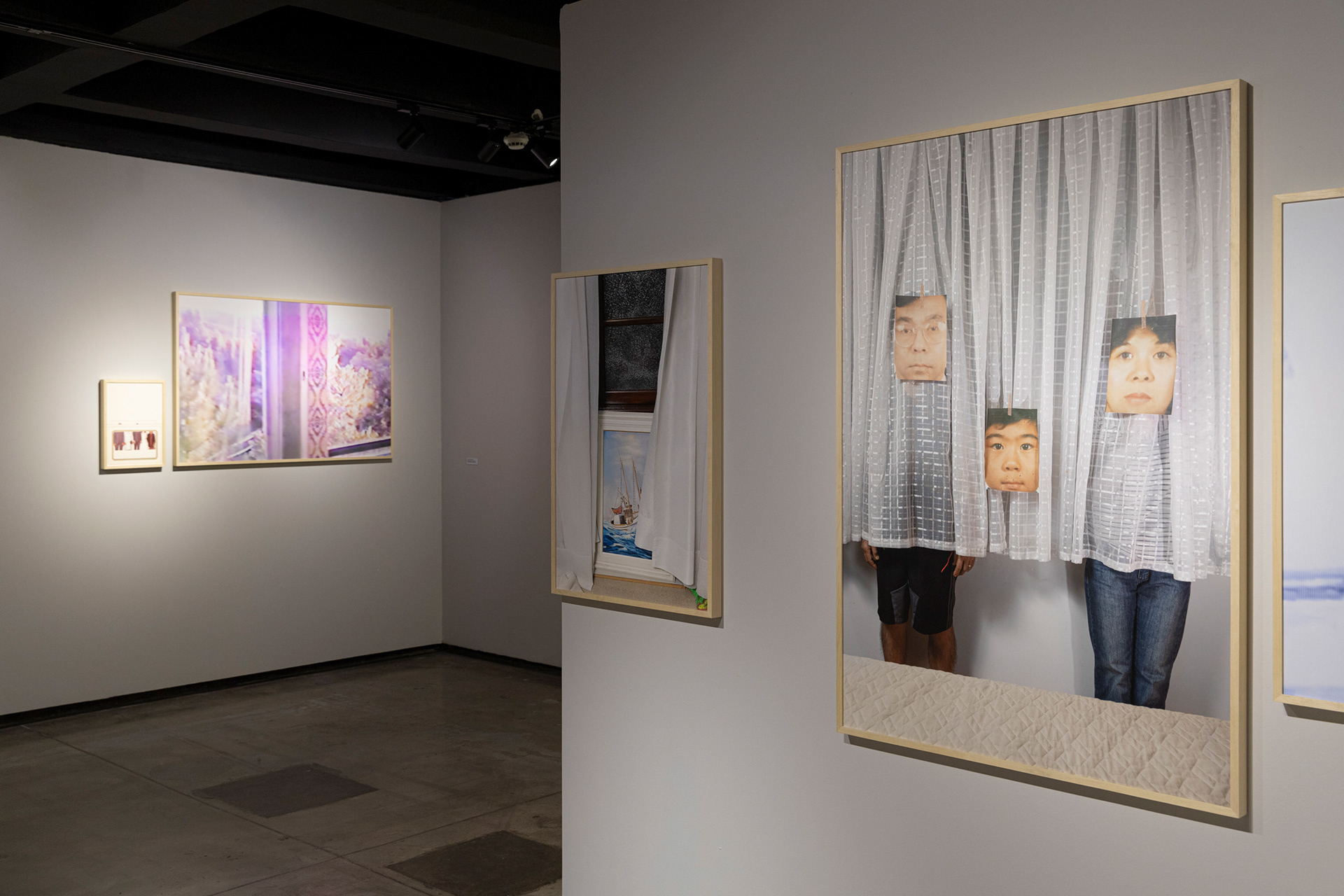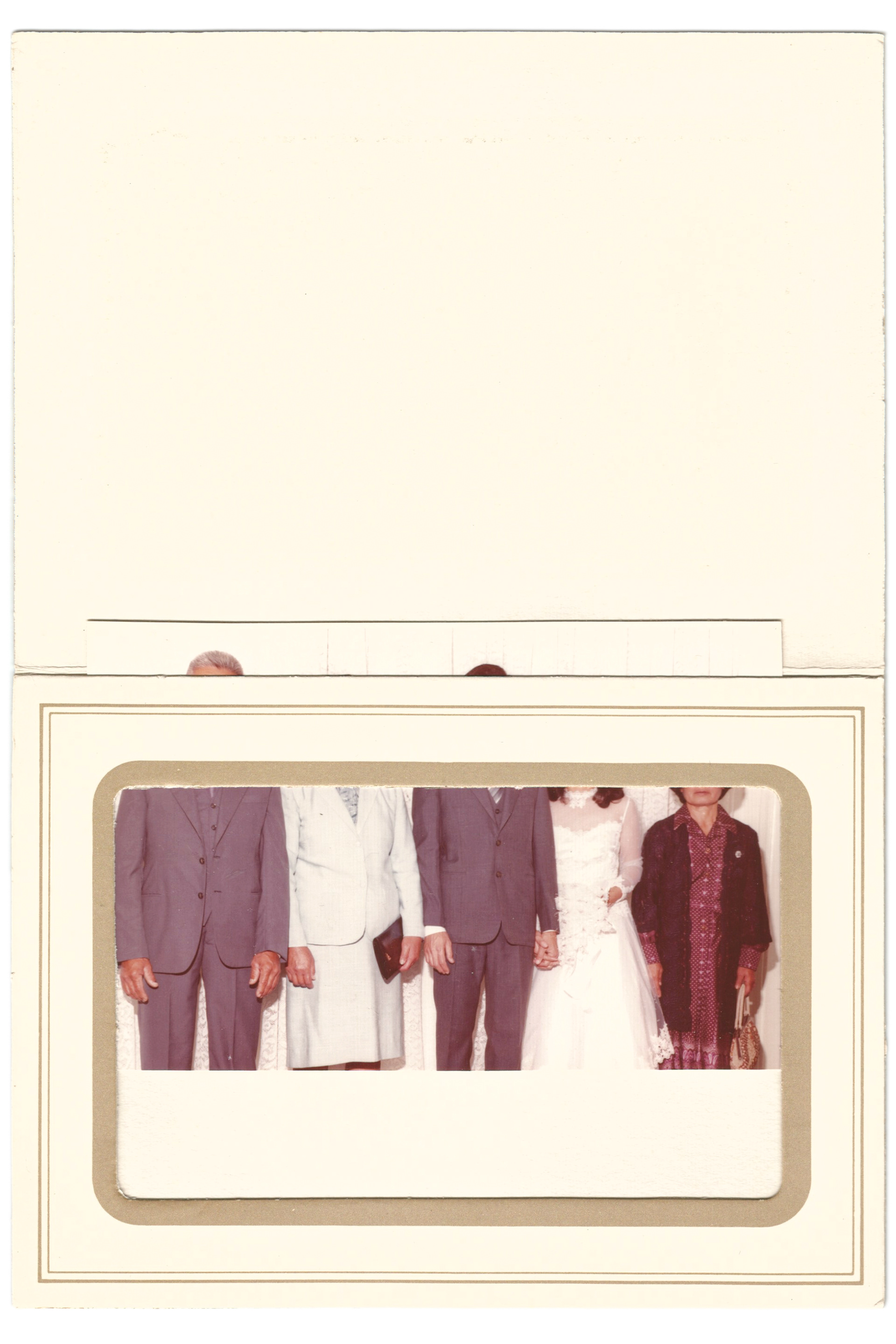
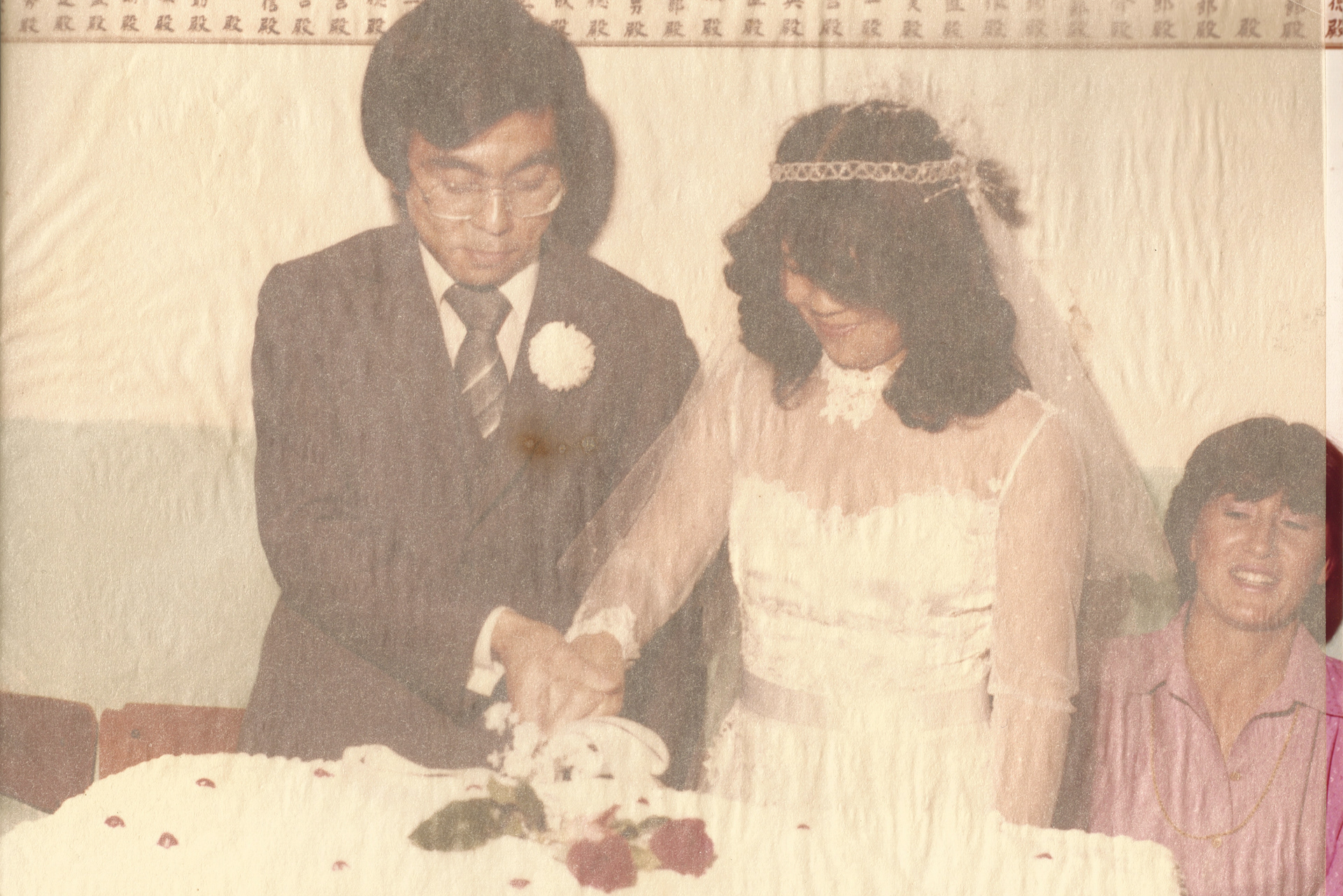

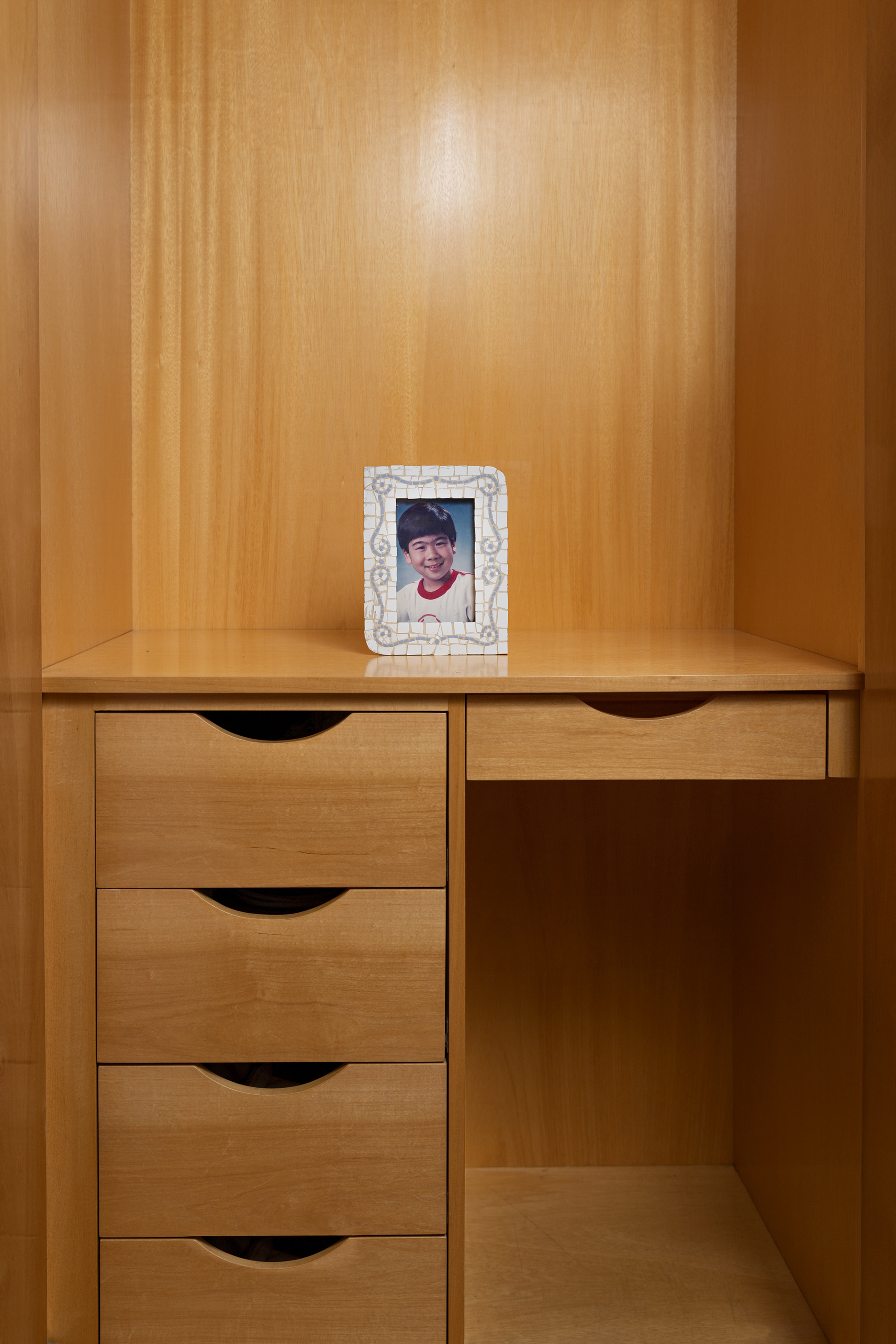
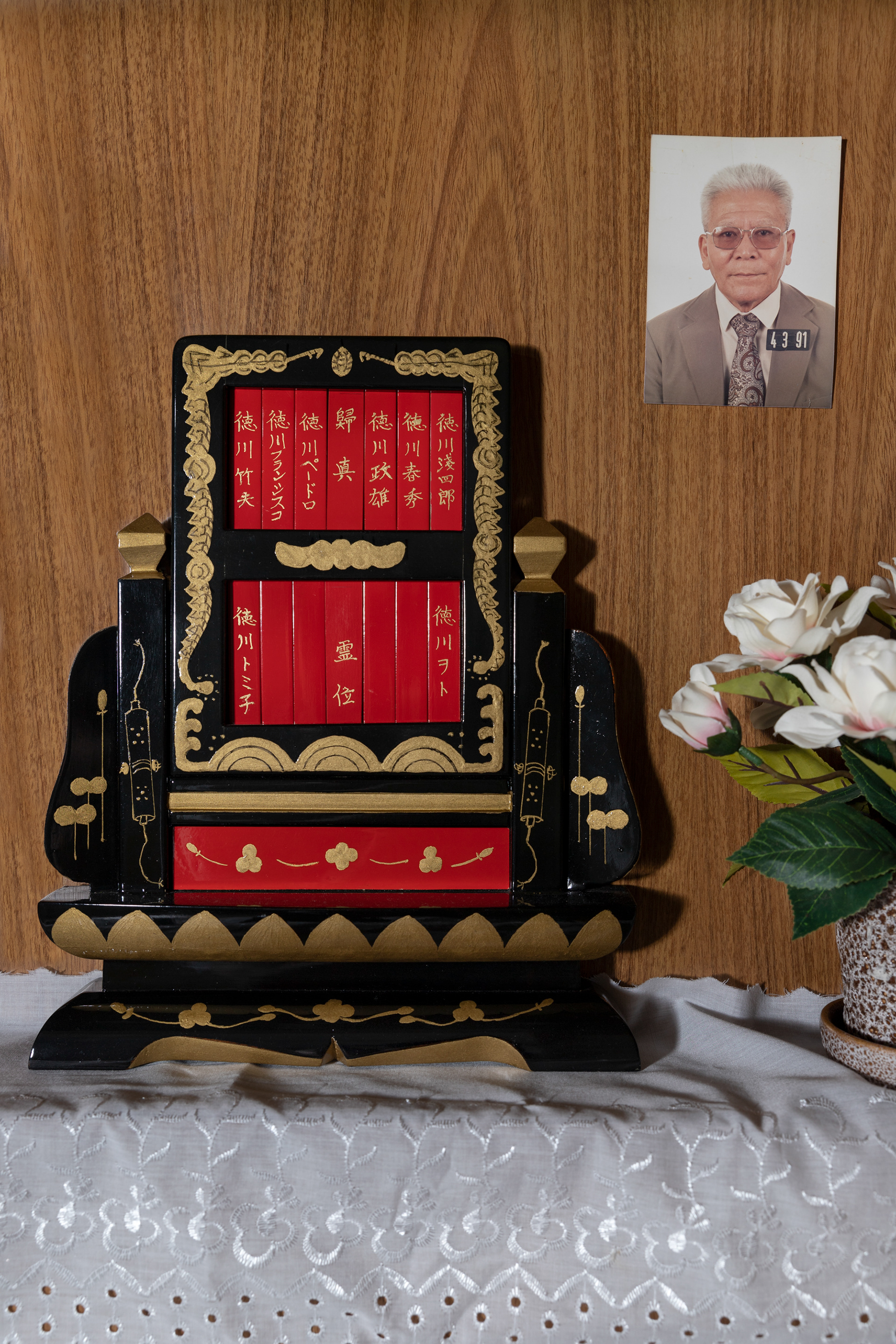
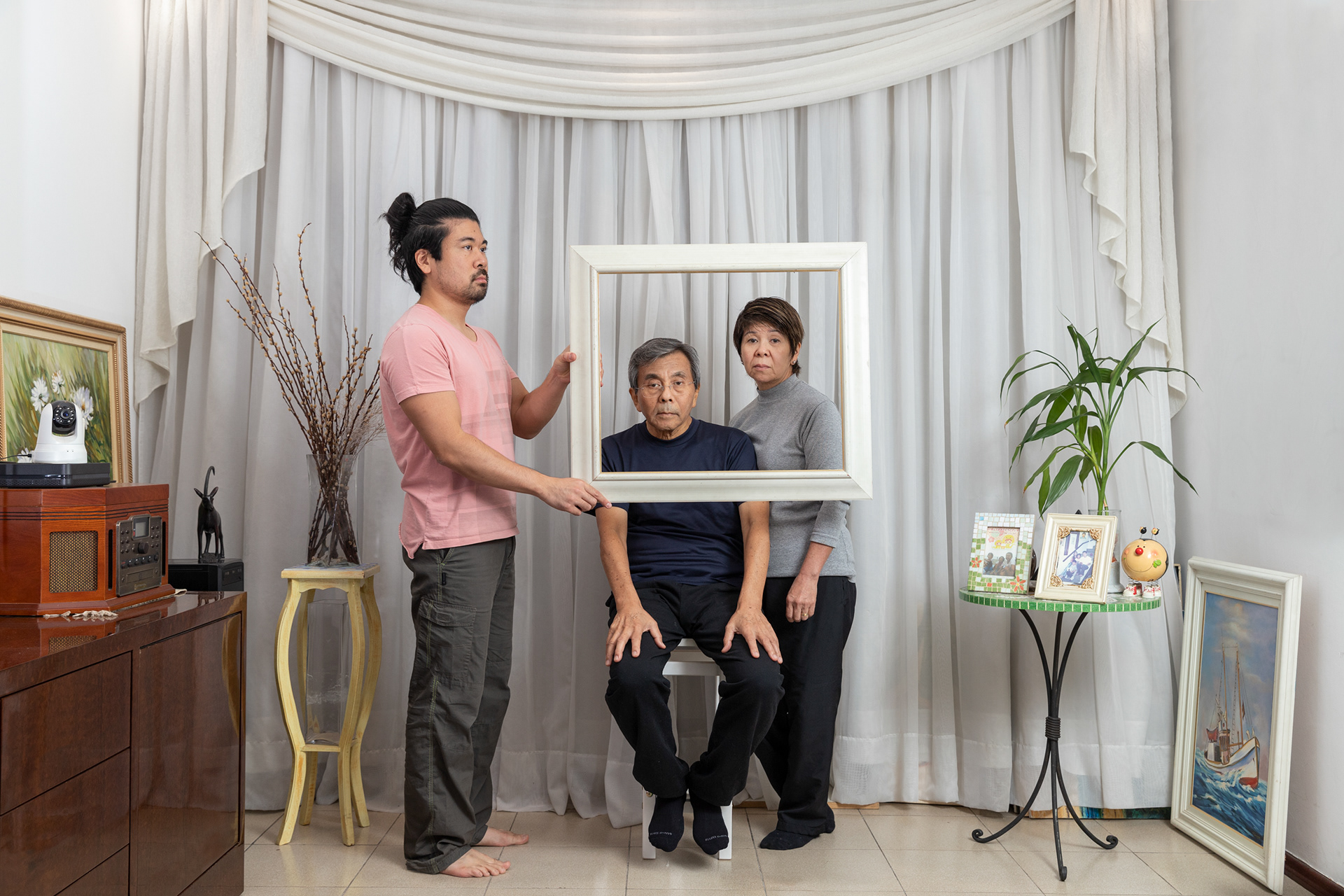
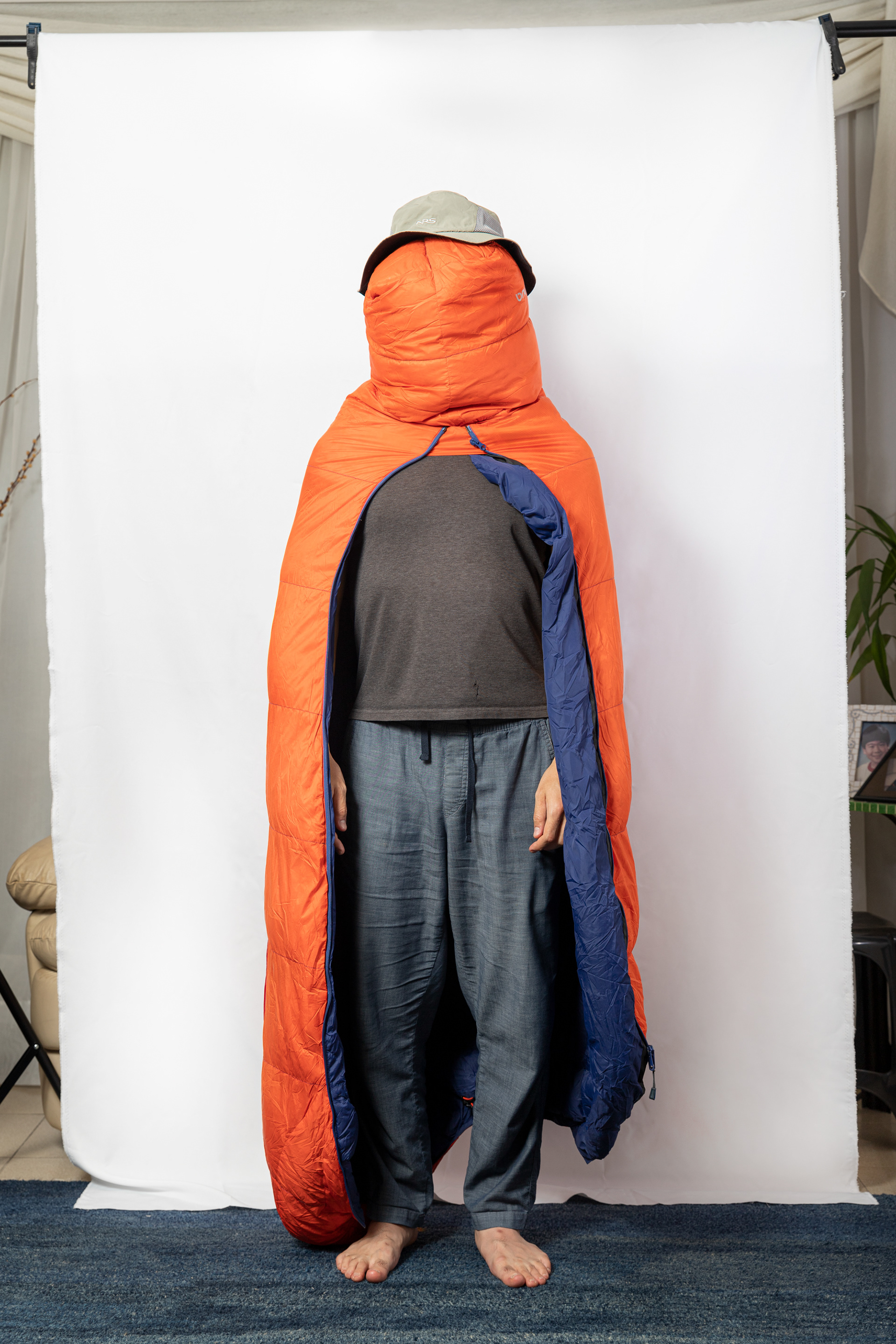


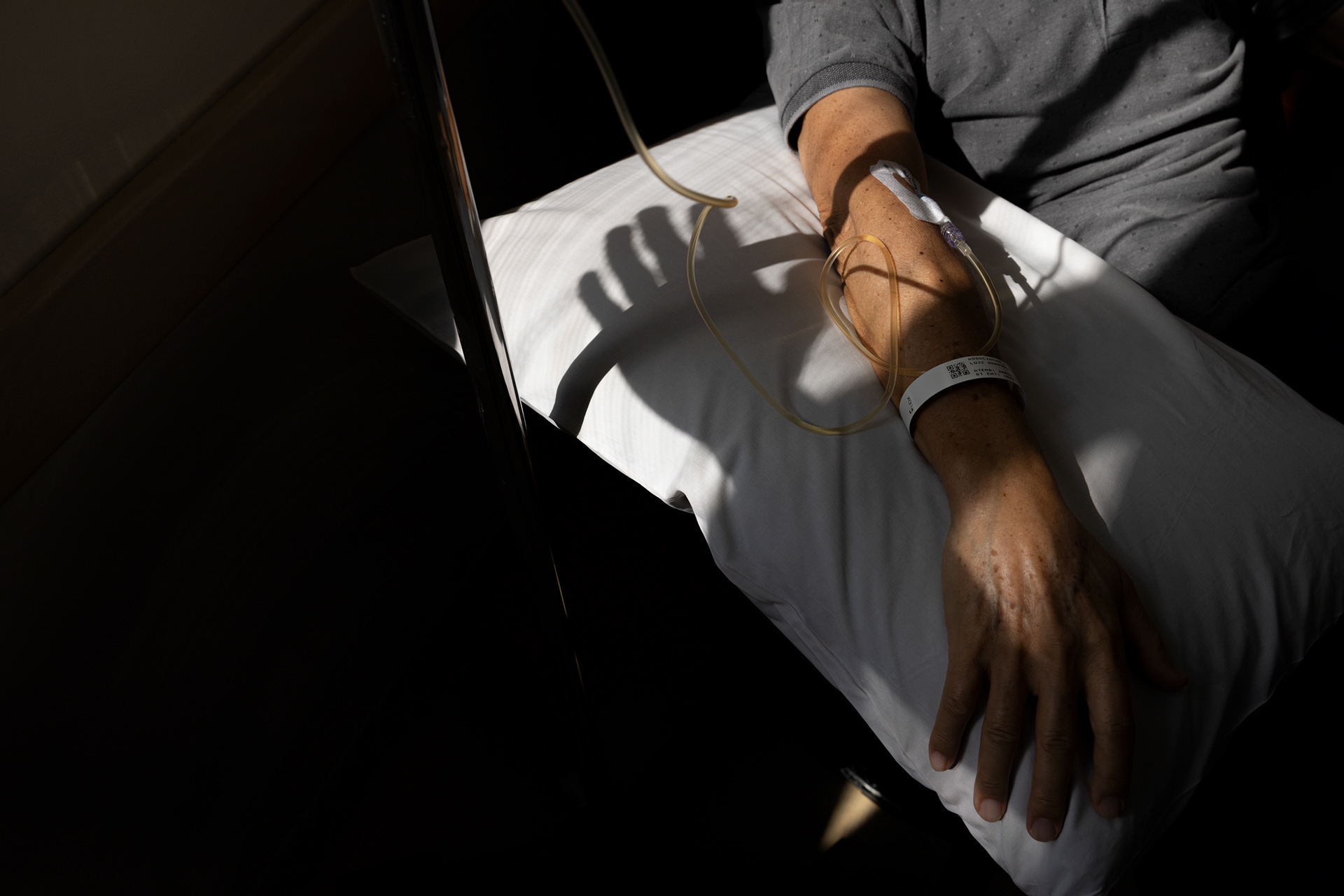
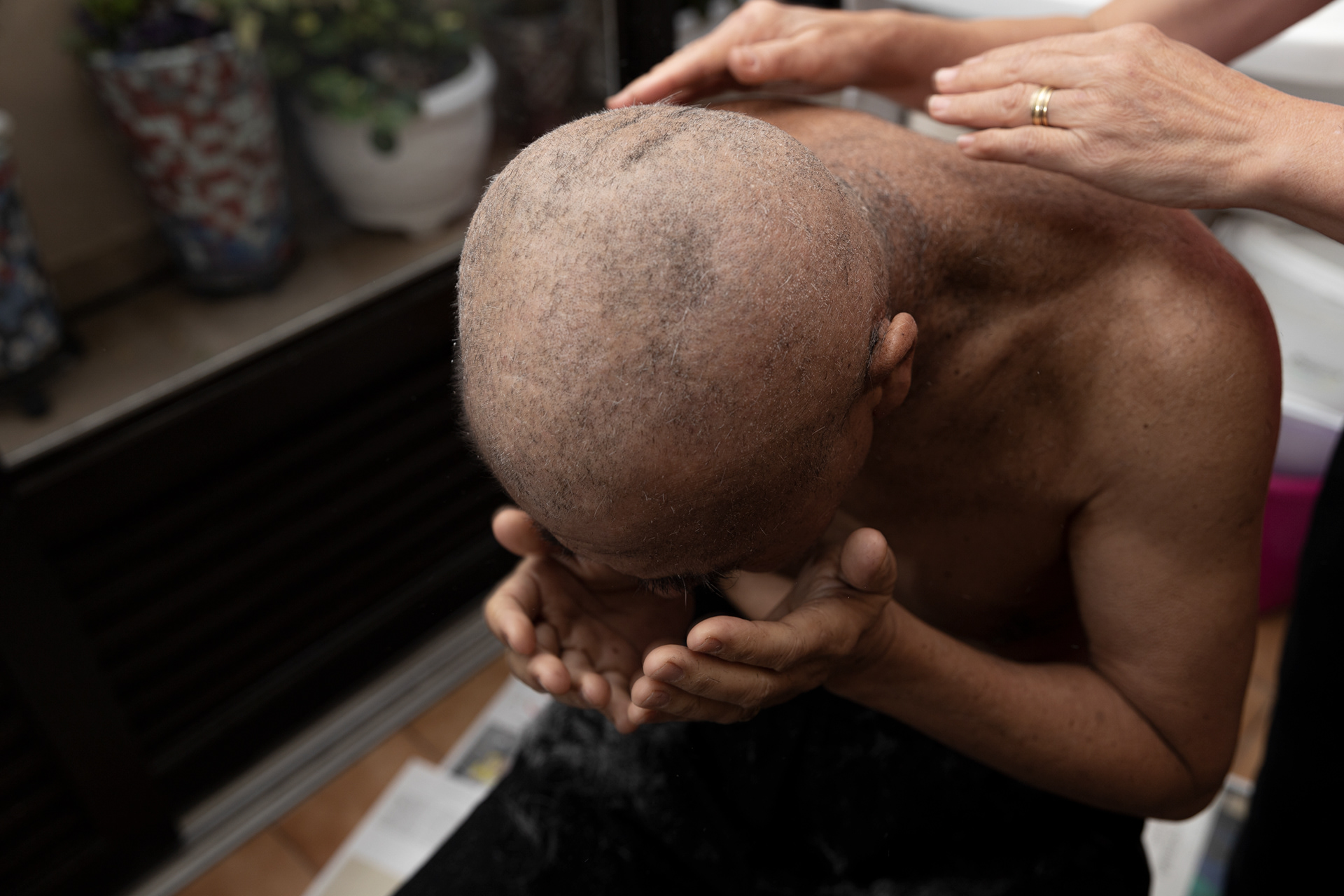
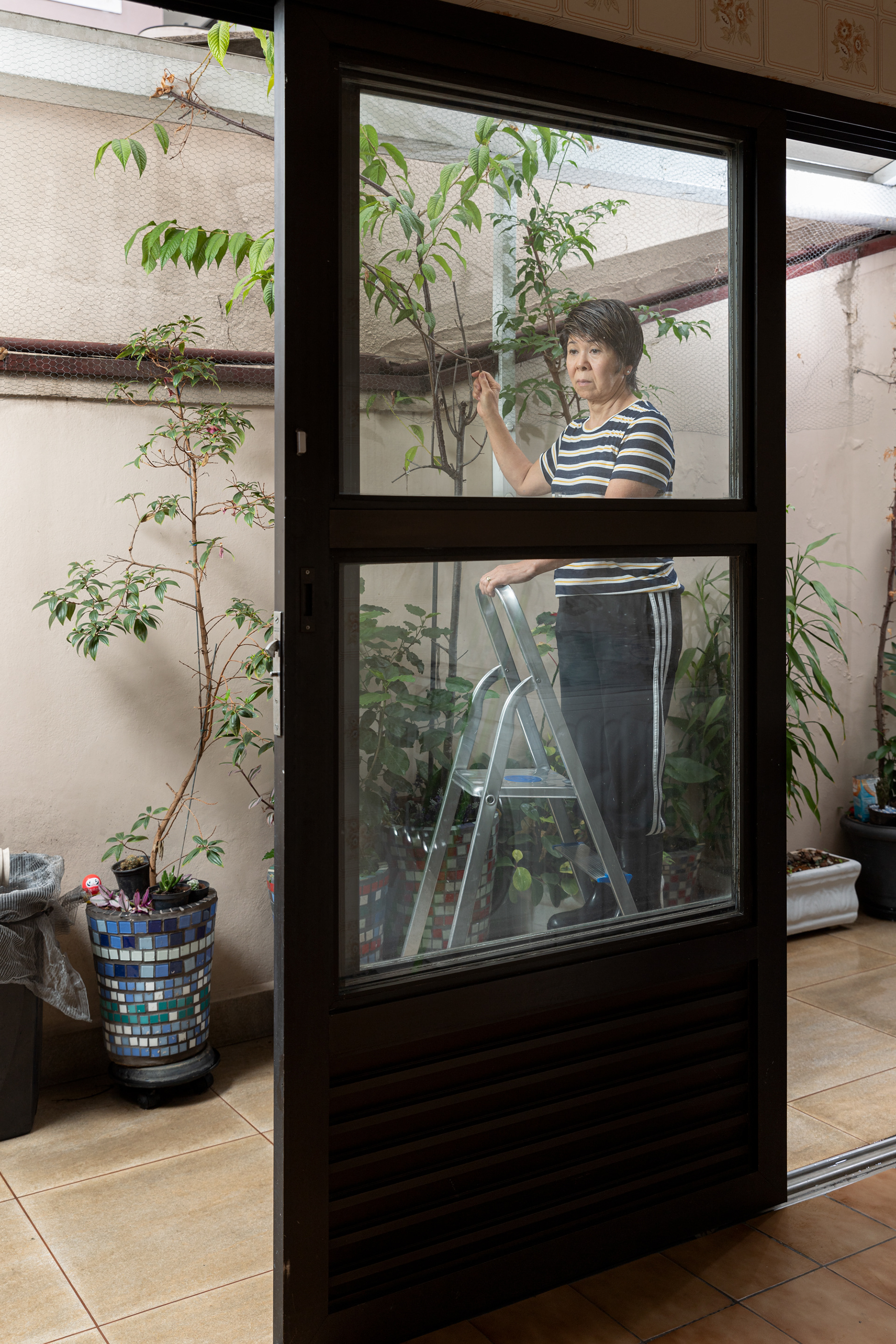

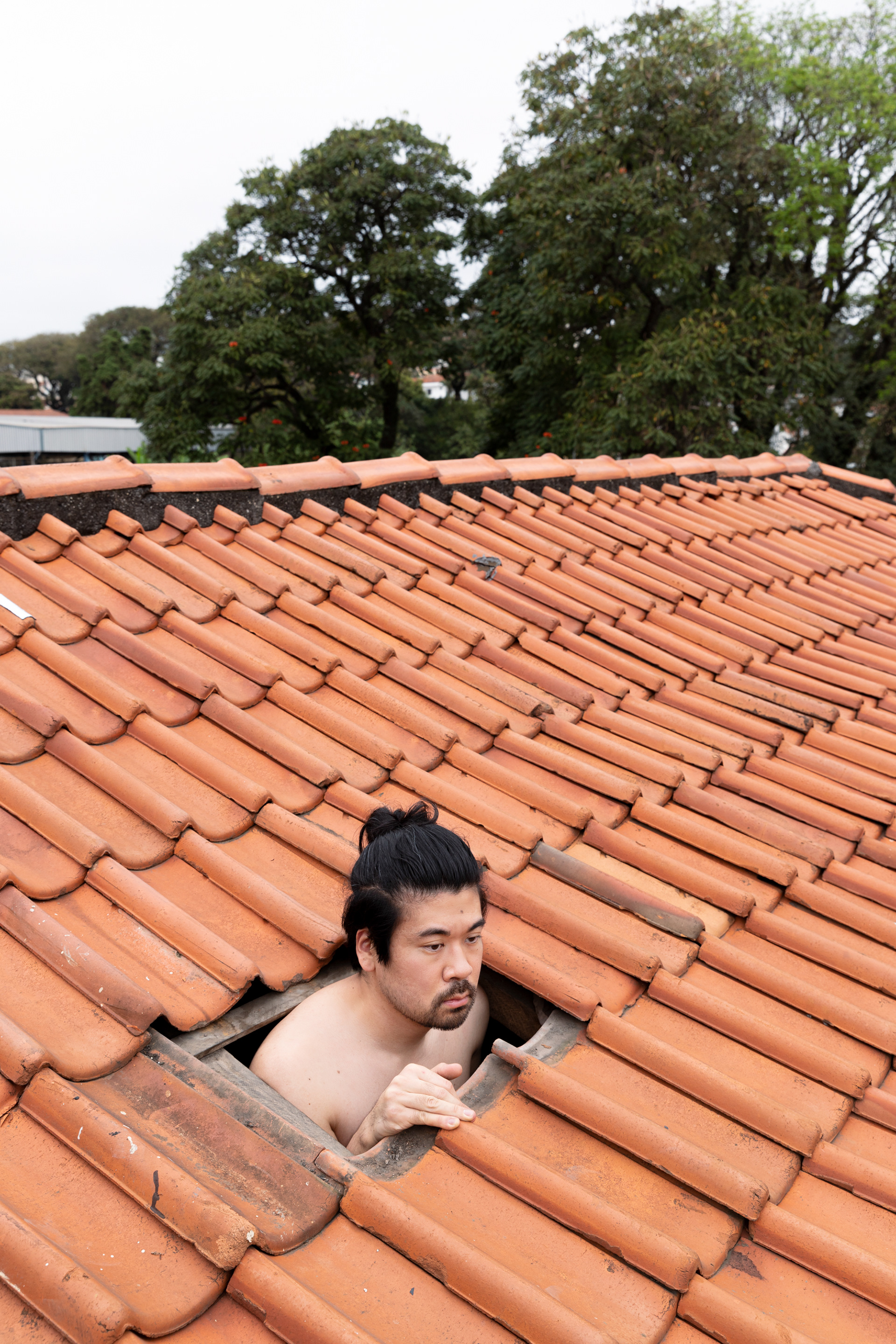
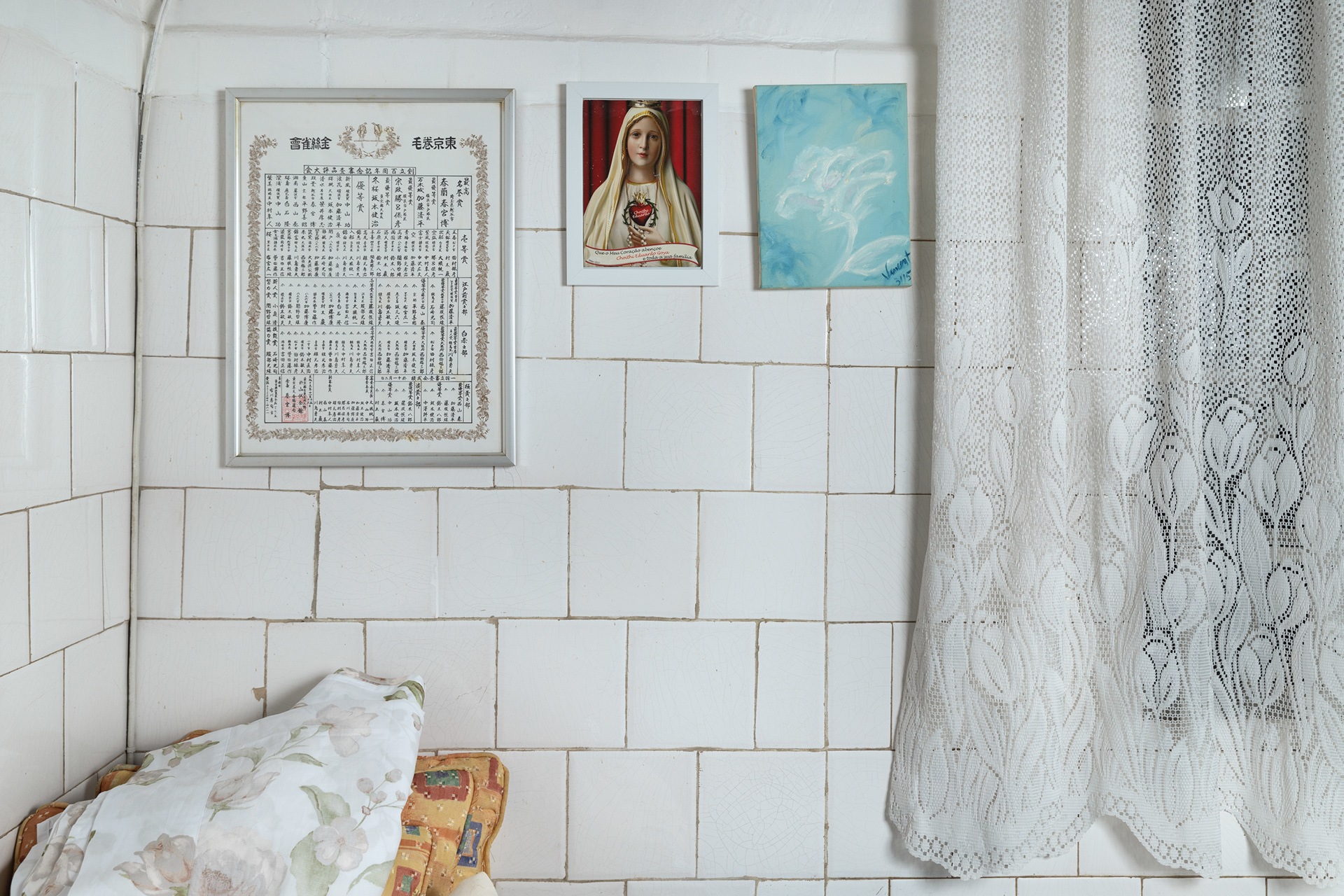

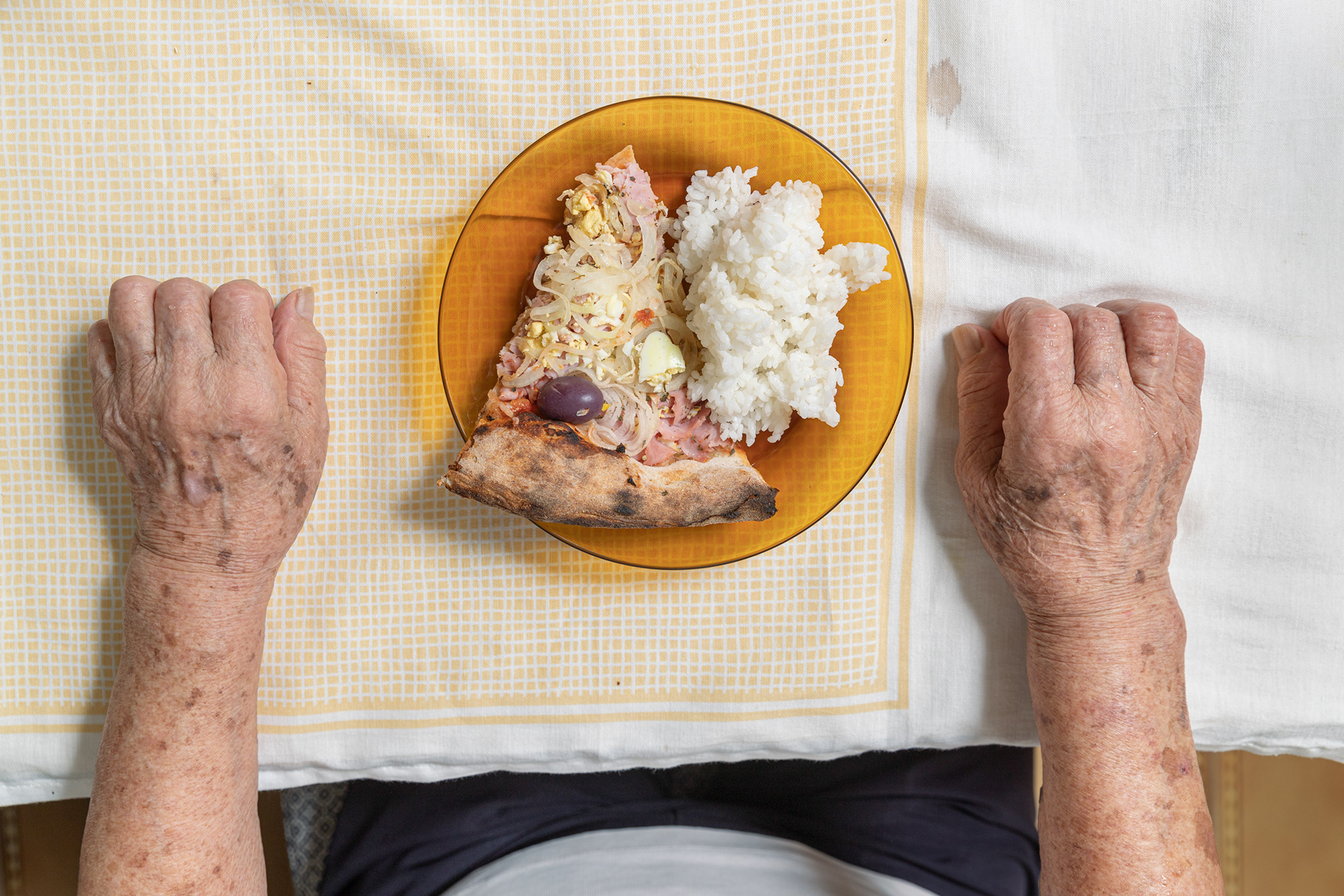

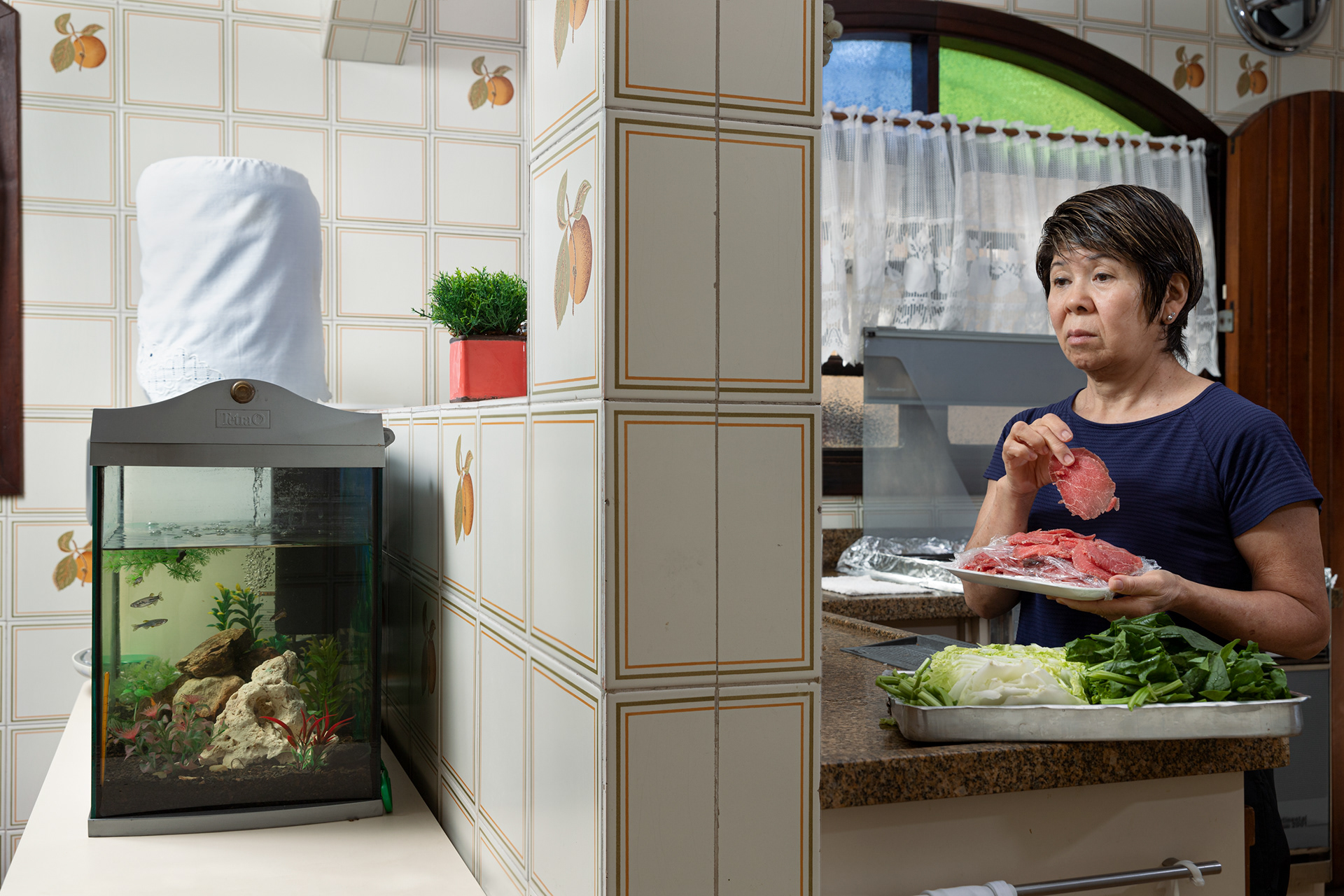

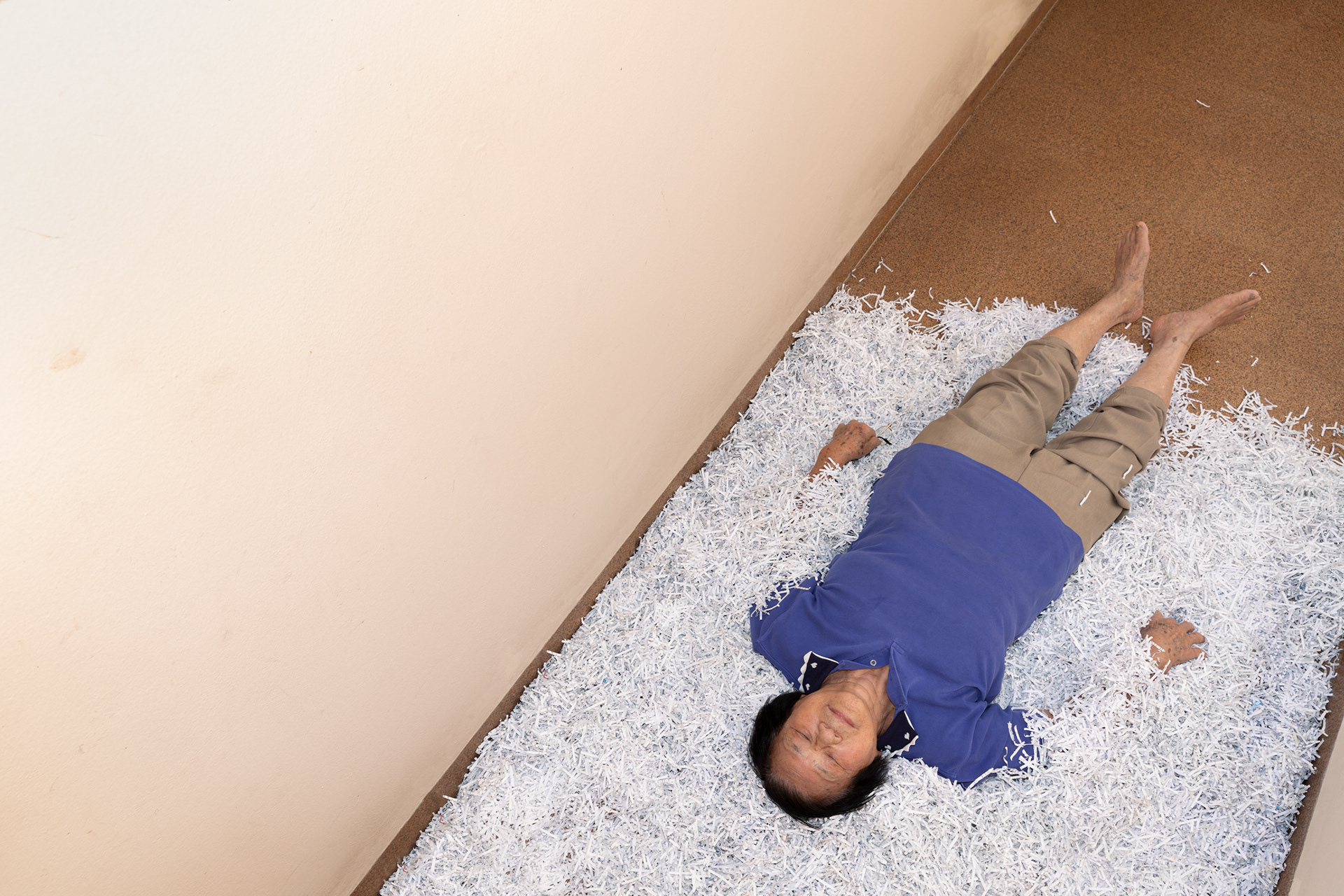
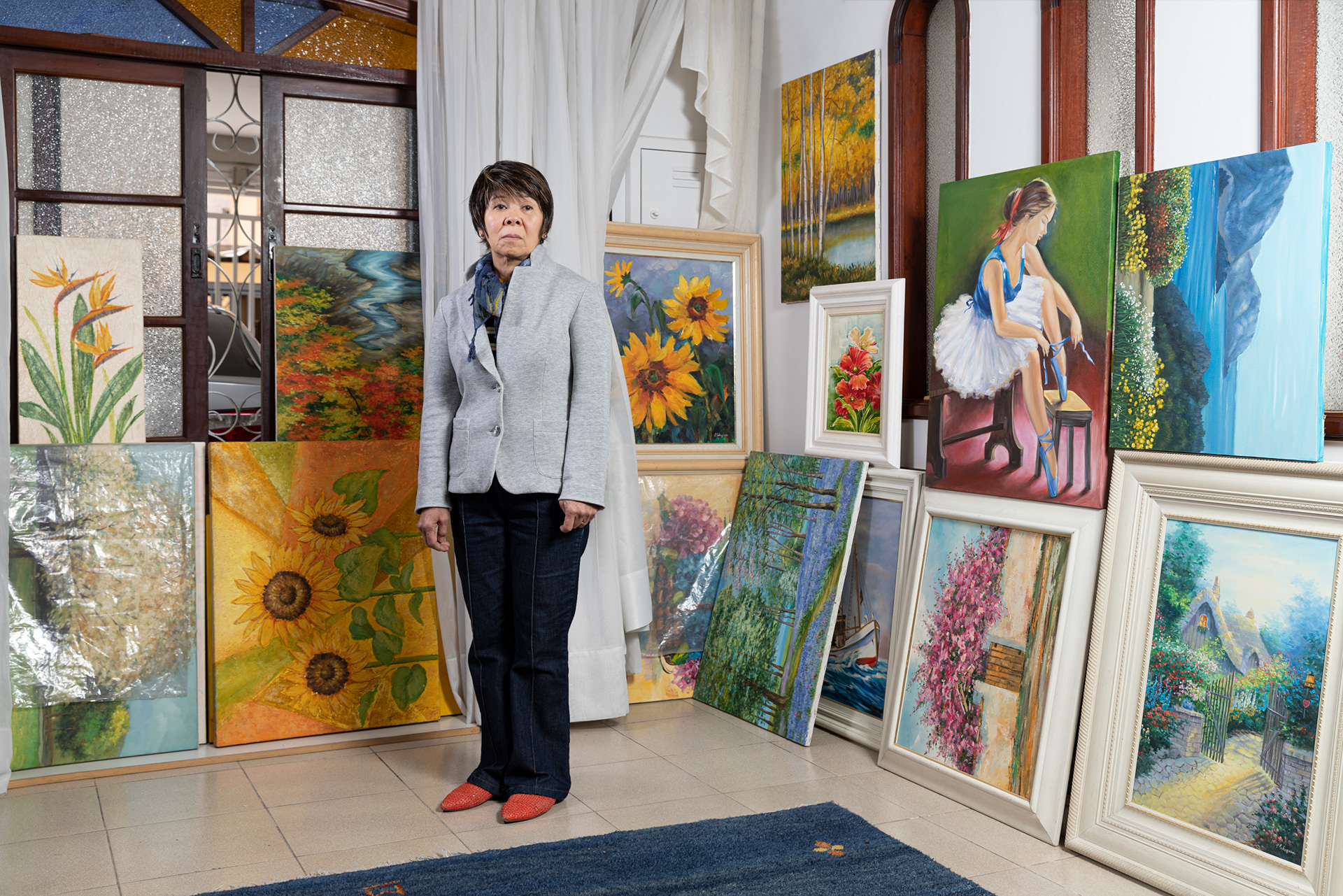


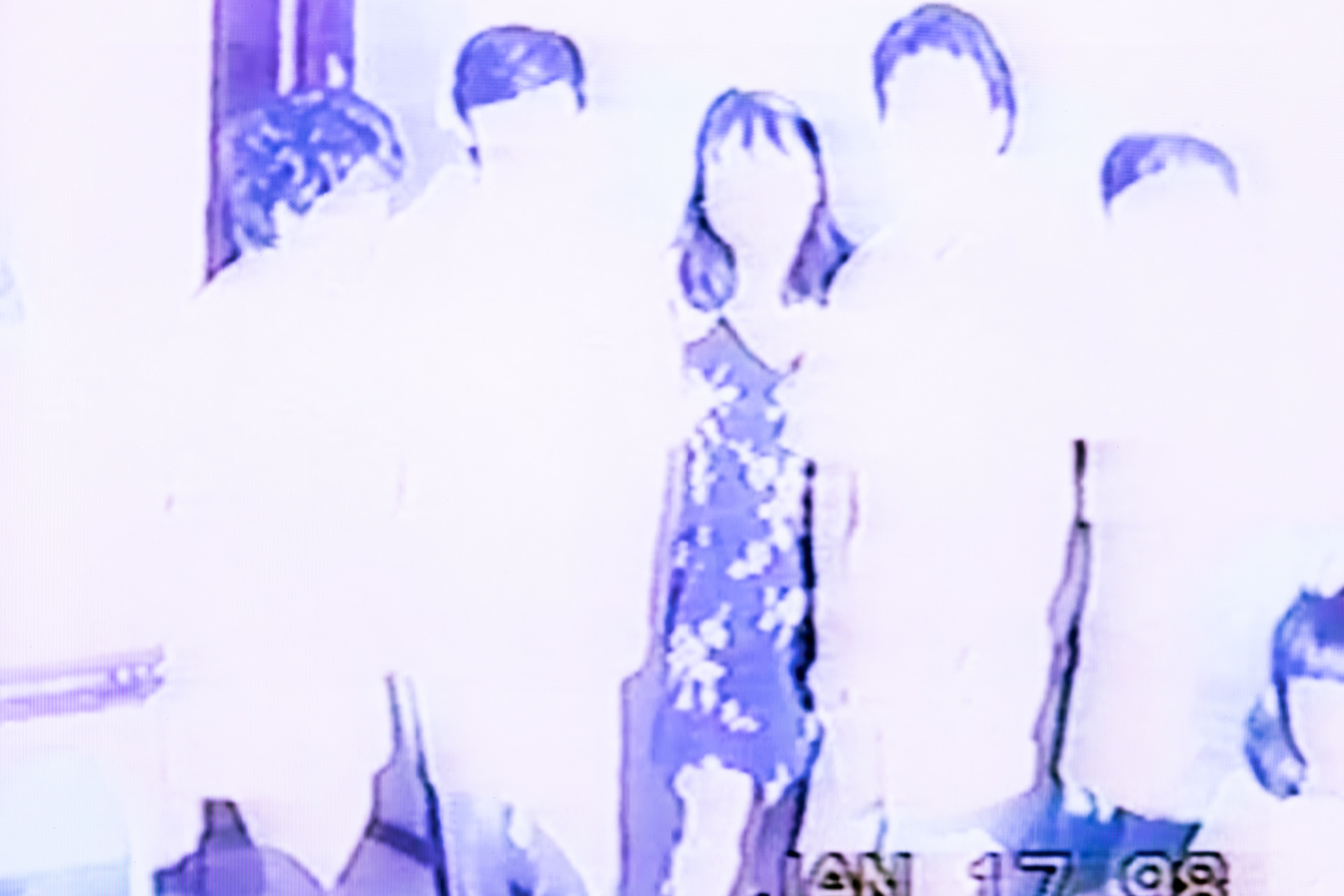
[ PT ] Ricardo Tokugawa é fruto de imigração: sansei, de ascendência okinawana, traz a mistura de três culturas no seu percurso: Brasil, Okinawa e Japão. Compreender o significado dessa posição vai muito além de questões geográficas e culturais, implica um enfrentamento pessoal, na busca pelo entendimento de si no mundo.
Utaki, em okinawano, traduz a ideia de um lugar sagrado, lugar de oração, geralmente espaços na natureza: um bosque, caverna ou montanha, acessados por poucos. Esse olhar para o sagrado, de acordo com a necessidade sentida pelo fotógrafo, se volta para suas raízes, num processo de investigação da família e da casa, conceitos que se misturam dentro da cultura japonesa.
As fotografias afixadas no butsudan, o oratório japonês, marcam a presença dos antepassados no espaço da casa. Os vestígios deixados na forma de retratos 3x4 lembram que as fronteiras do visível estão constantemente permeadas pelo mundo invisível dos mortos.
Ricardo recria e confronta modelos, a nos sugerir que a tradição é algo inventado. Até mais do que isso, sua obra desafia a própria noção de tradição, evidenciando o caráter performático da existência humana, uma vez que o artista produz e atualiza seus próprios rituais de passagem. Nesses hiatos, se instaura a tensão interna da obra: são momentos de deslocamento, de presença e de falta, de encontro, afastamento e retorno. Essas práticas discursivas tornam a experiência narrada mais potente, rompendo com os muros da casa para alcançar, assim, distâncias maiores, outros modos de habitar o próprio corpo e os espaços domésticos. Convida todos os membros de seu munchuu, os que estão sob o mesmo teto, a participarem de seu mundo particular, compartilhando e trocando experiências. Torna-se diretor de cena e, na elaboração de narrativa própria e única, teatraliza o cotidiano.
Utaki nos incita a olhar, de dentro para fora, para nossas próprias questões identitárias, os reconhecimentos e estranhamentos que, de dentro de nossas tradições, lugares, costumes e hábitos particulares, não cessam de se mover e se renovar. Enquanto (des)construção de experiência, memória e arquivo familiar, a história contada, a experiência vivida, passam a não ser mais só memória pessoal, mas confronto dinâmico com as próprias alteridades, sempre presentes. Nessa travessia, faz de si mesmo um instrumento e uma realidade para o outro, uma prática de mundo.
[ EN ] Ricardo Tokugawa is the produce of immigration: Sansei, of Okinawan descent, he carries the mixture of three cultures in his path: Brazil, Okinawa and Japan. Understanding the meaning of this position goes far beyond geographic and cultural issues, implies a personal confrontation, in his pursuit to understand himself in the world.
Utaki, in Okinawan, translates the idea of a holy place, place of prayer, usually spaces in nature: a forest, cave or mountain, accessed by few. This look at the sacred, in line with the need felt by the photographer, glances at his roots, in a process of investigation of family and home, concepts that are blended within Japanese culture.
The photographs posted on the butsudan, the Japanese shrine, mark the presence of the ancestors in the space of the household. The traces left in the form of 3x4 portraits remind us that the borders of the visible are constantly permeated by the invisible world of the deceased.
Ricardo recreates and confronts models, suggesting to us that tradition is something invented. Way further than this, his work challenges the very notion of tradition, highlighting the performative character of human existence, as the artist produces and updates his own rites of passage. In these gaps, the work’s internal tension is established: there are moments of displacement, presence and absence, encounter, estrangement and return. These discursive practices make the narrated experience more potent, breaking the walls of the house to therefore reach greater distances, other ways of inhabiting one’s own body and domestic spaces. He invites all members of his munchuu, those who dwell under the same roof, to take part in his private world, sharing and exchanging experiences. He becomes a stage director and, in the elaboration of his own and unique narrative, he dramatizes everyday life.
Utaki urges us to look, from the inside out, at our own identity issues, recognitions, and estrangements which, from within our particular traditions, places, rituals and habits, do not cease to move and refresh themselves. While (de)construction of experience, memory and family archive, the story told and the experience lived are no longer just personal memory, but a dynamic confrontation with one’s own alterities, always present. In this crossing, he makes himself an instrument and a reality for the other, a world practice.
Daniel Salum
Utaki
Fotografias / Photographs
Impressão em jato de tinta com pigmento mineral em papel de fibra de celulose
Exposições / Exhibitions
Museu da Imagem e do Som (MIS-SP), 2023
